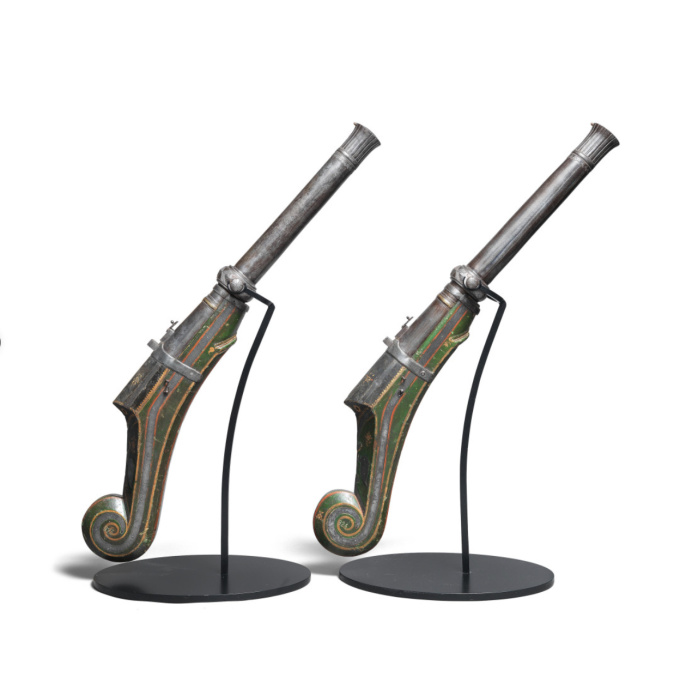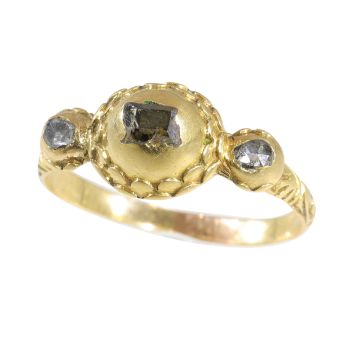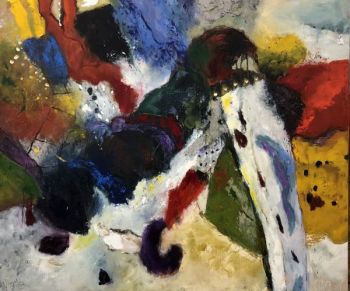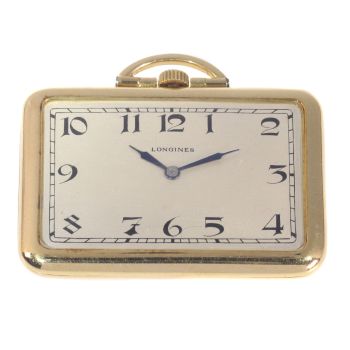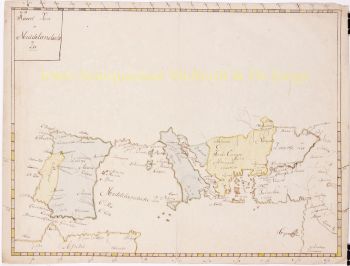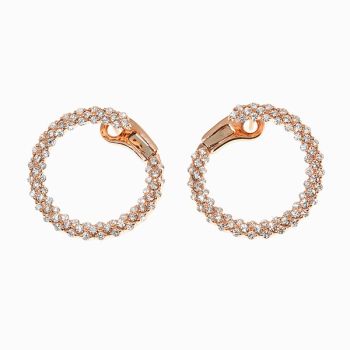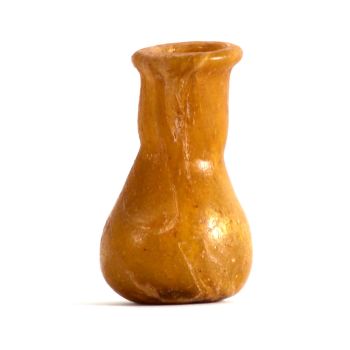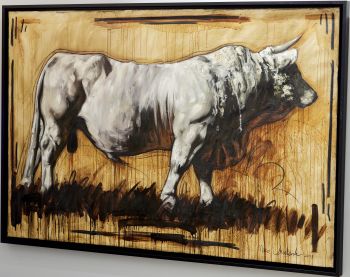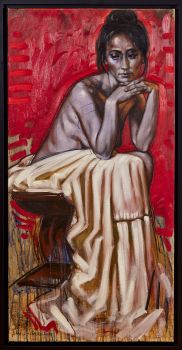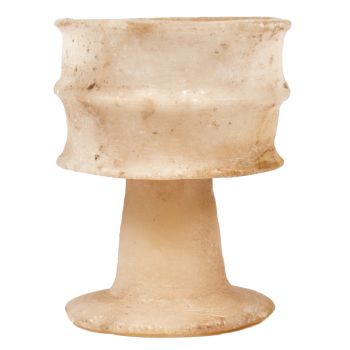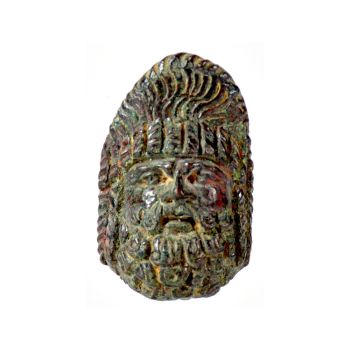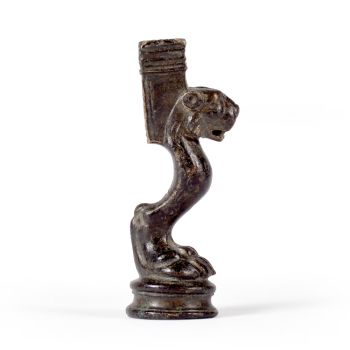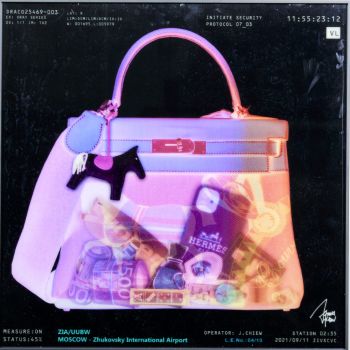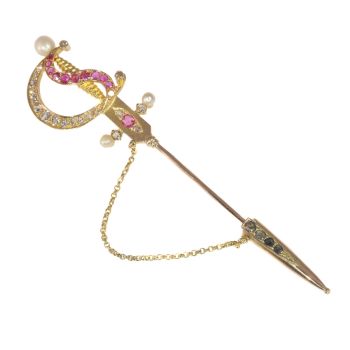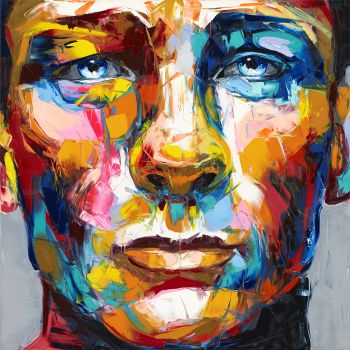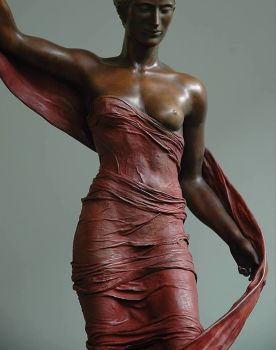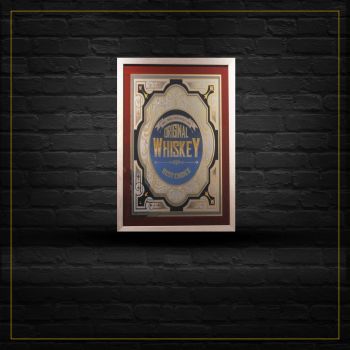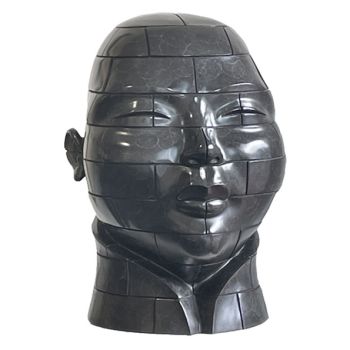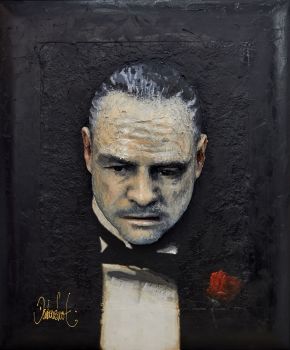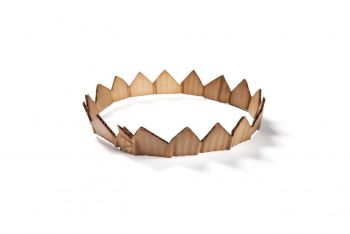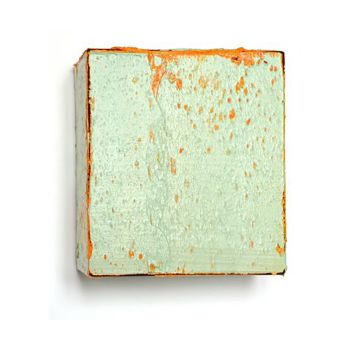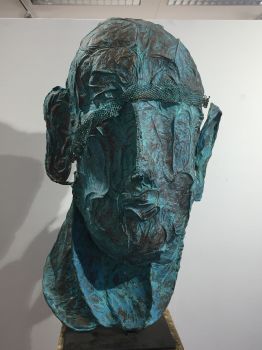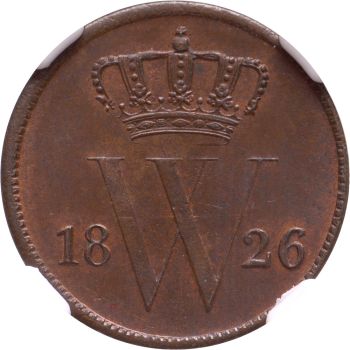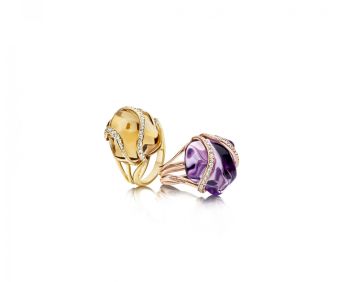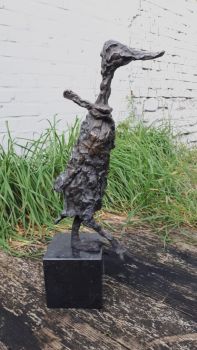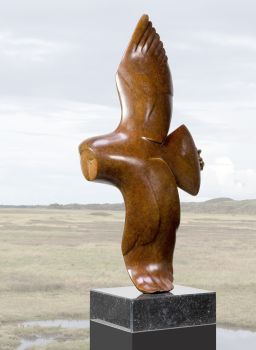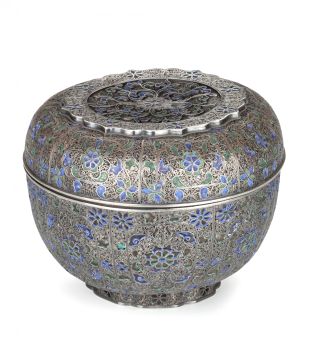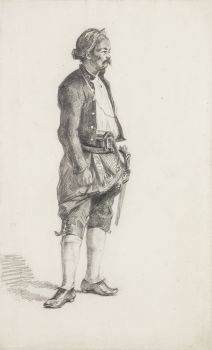A rare pair of Royal camel-guns or 'zamburak', formerly belonging to Maharaja Bahadur Singh of Ajmer 1857 - 1903
Artista Desconocido
MaderaOroMetal
116 cm
Actualmente no disponible a través de Gallerease
Zebregs & Röell - Fine Art - Antiques
- Sobre la obra de arteA rare pair of Royal camel-guns or 'zamburak', formerly belonging to Maharaja Bahadur Singh of Ajmer (1857-1903)
Rajasthan, Ajmer, dated Samvat 1952 (1895 CE)
Each cannon in polychrome wood and koftgari gold steel, inscribed 'Maharaj Shri Bahadur Singh Ji, Rajasthan Masuda Samvat 1952'.
L. 116 cm (each)
A zanburak, pronounced zamburak, is known in Arabic, Persian and Turkish as wasp, bee or hornet. ‘Zambur’ means hornet, and ‘ak’ is the diminutive - so ‘little wasp’. These swivel guns were carried by camels and were used by the Persians in the eighteenth century until their demise in 1849. In battle, the animals would be restrained on their knees and loaded as bombardiers, after which the weapons would be fired from atop their backs. Zamburaks were the Indian response to European horse artillery. However, the zamburaks were less mobile and thus less manoeuvrable than horse artillery. An Ottoman example of one of these guns mounted on a camel is illustrated by Marsigli in L'Etat militaire de l'Empire Ottoman in 1732. During the Sikh Wars (1846-1847 & 1848-1849), the speed of movement of the European horse artillery made the zamburaks useless. They were too slow, and their power was inadequate. They couldn’t catch up with the European horse artillery. That doesn’t, however, make them less impressive and frightening.
Provenance:
Maharaja Rao Saheb Bahadur Singh, Thakur of Masuda (reigned 1863-1903)
Collection Davinder Toor, London
Sources:
Roy Kaushik, ‘Military Synthesis in South Asia: Armies, Warfare and Indian Society, c. 1740-1849’, in: The Journal of Military History, Volume 69, no. 3, 2005, p. 662
Robert Elgood, Firearms of the Islamic World in the Tareq Rajab Museum, Kuwait, I.B. Tauris & Co. Ltd, 1995, p. 137-139 - Sobre el artista
Puede suceder que un artista o creador sea desconocido.
Algunas obras no deben determinarse por quién está hecho o por (un grupo de) artesanos. Algunos ejemplos son estatuas de la Antigüedad, muebles, espejos o firmas que no son claras o legibles, pero también algunas obras no están firmadas en absoluto.
También puedes encontrar la siguiente descripción:
•"Atribuido a …." En su opinión, probablemente una obra del artista, al menos en parte.
•“Estudio de….” o “Taller de” En su opinión, una obra ejecutada en el estudio o taller del artista, posiblemente bajo su supervisión
•“Círculo de…” En su opinión, una obra del período del artista que muestra su influencia, estrechamente asociado con el artista pero no necesariamente su alumno.
•"Estilo de …." o “Seguidor de…”. En su opinión, una obra ejecutada al estilo del artista pero no necesariamente por un alumno; puede ser contemporáneo o casi contemporáneo
•"Manera de …." En su opinión una obra al estilo del artista pero de fecha posterior
•"Después …." En su opinión, una copia (de cualquier fecha) de una obra del artista
•“Firmado…”, “Fechado…” o “Inscrito” En su opinión, la obra ha sido firmada/fechada/inscrita por el artista. La adición de un signo de interrogación indica un elemento de duda.
•“Con firma…”, “Con fecha…”, “Con inscripción…” o “Lleva firma/fecha/inscripción” en su opinión la firma/fecha/inscripción ha sido añadida por alguien que no es el artista
¿Está interesado en comprar esta obra de arte?
Related artworks
- 1 - 4 / 12
Artista Desconocido
The bell of the VOC fortress in Jaffna, Sri Lanka1747
Precio a consultarZebregs & Röell - Fine Art - Antiques
 curada por
curada porDanny Bree
1 - 4 / 13- 1 - 4 / 8
- 1 - 4 / 24
Artista Desconocido
PAREJA DE ANTORCHAS O VELAS DE TECA DORADA Y LACADA INDONESIA18th century
Precio a consultarZebregs & Röell - Fine Art - Antiques
Artista Desconocido
Holandeses en miniatura (Netsuke)1700 - 1900
Precio a consultarZebregs & Röell - Fine Art - Antiques
Artista Desconocido
UN PEQUEÑO NETSUKE DE MARFIL DE UN HOLANDÉS CON UN TAMBOR1750 - 1800
Precio a consultarZebregs & Röell - Fine Art - Antiques
 curada por
curada porDanny Bree
Artista Desconocido
Dos retratos de estudio de Mas Marco Kartodikromo1900 - 1950
Precio a consultarZebregs & Röell - Fine Art - Antiques
Artista Desconocido
A silver spoon commemorating Juff’ Margareta van Hoorn1656 - 1694
Precio a consultarZebregs & Röell - Fine Art - Antiques
1 - 4 / 12

